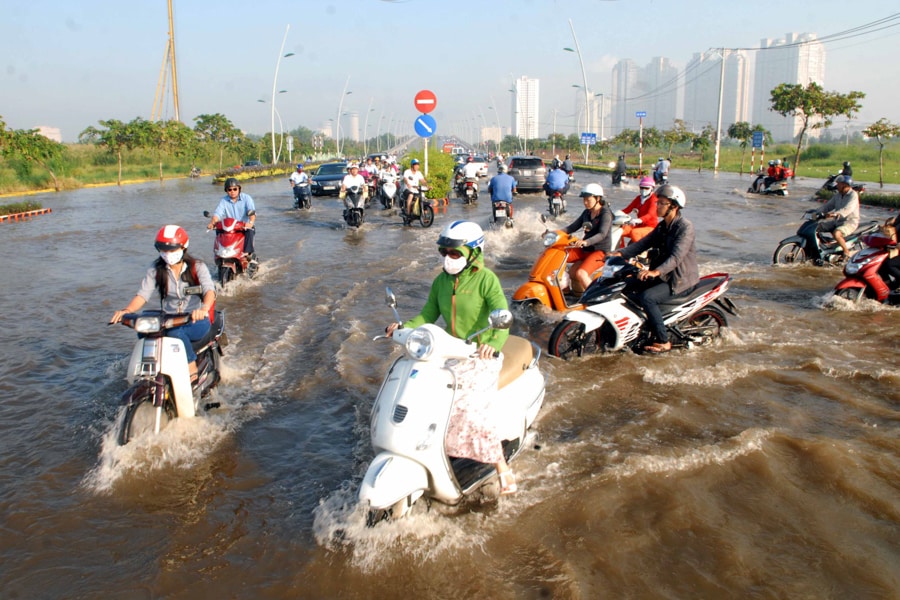
From Mumbai to Ho Chi Minh: Rising seas will erase more cities by 2050
Rising seas could affect three times more people by 2050 than previously thought, according to new research, threatening to all but erase some of the world's great coastal cities, including much of Mumbai, one of the largest cities in the world, since it wasbuilt on what was once a series of islands, the city's historic downtown core is particularly vulnerable
 Image: Vietnam News Agency/AFP via Getty Images
Image: Vietnam News Agency/AFP via Getty ImagesRising seas could affect three times more people by 2050 than previously thought, according to new research, threatening to all but erase some of the world’s great coastal cities.
The authors of a paper published Tuesday developed a more accurate way of calculating land elevation based on satellite readings, a standard way of estimating the effects of sea level rise over large areas, and found that the previous numbers were far too optimistic. The new research shows that some 150 million people are now living on land that will be below the high-tide line by midcentury.
Southern Vietnam could all but disappear.
More than 20 million people in Vietnam, almost one quarter of the population, live on land that will be inundated.
Click here to see full projections
Much of Ho Chi Minh City, the nation’s economic center, would disappear with it, according to the research, which was produced by Climate Central, a science organization based in New Jersey, and published in the journal Nature Communications. The projections don’t account for future population growth or land lost to coastal erosion.
Standard elevation measurements using satellites struggle to differentiate the true ground level from the tops of trees or buildings, said Scott A. Kulp, a researcher at Climate Central and one of the paper’s authors. So he and Benjamin Strauss, Climate Central’s chief executive, used artificial intelligence to determine the error rate and correct for it.
©2019 New York Times News Service
 Rising seas could affect three times more people by 2050 than previously thought, according to new research, threatening to all but erase some of the world’s great coastal cities
Rising seas could affect three times more people by 2050 than previously thought, according to new research, threatening to all but erase some of the world’s great coastal cities



